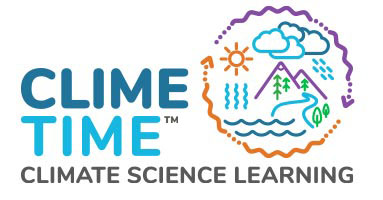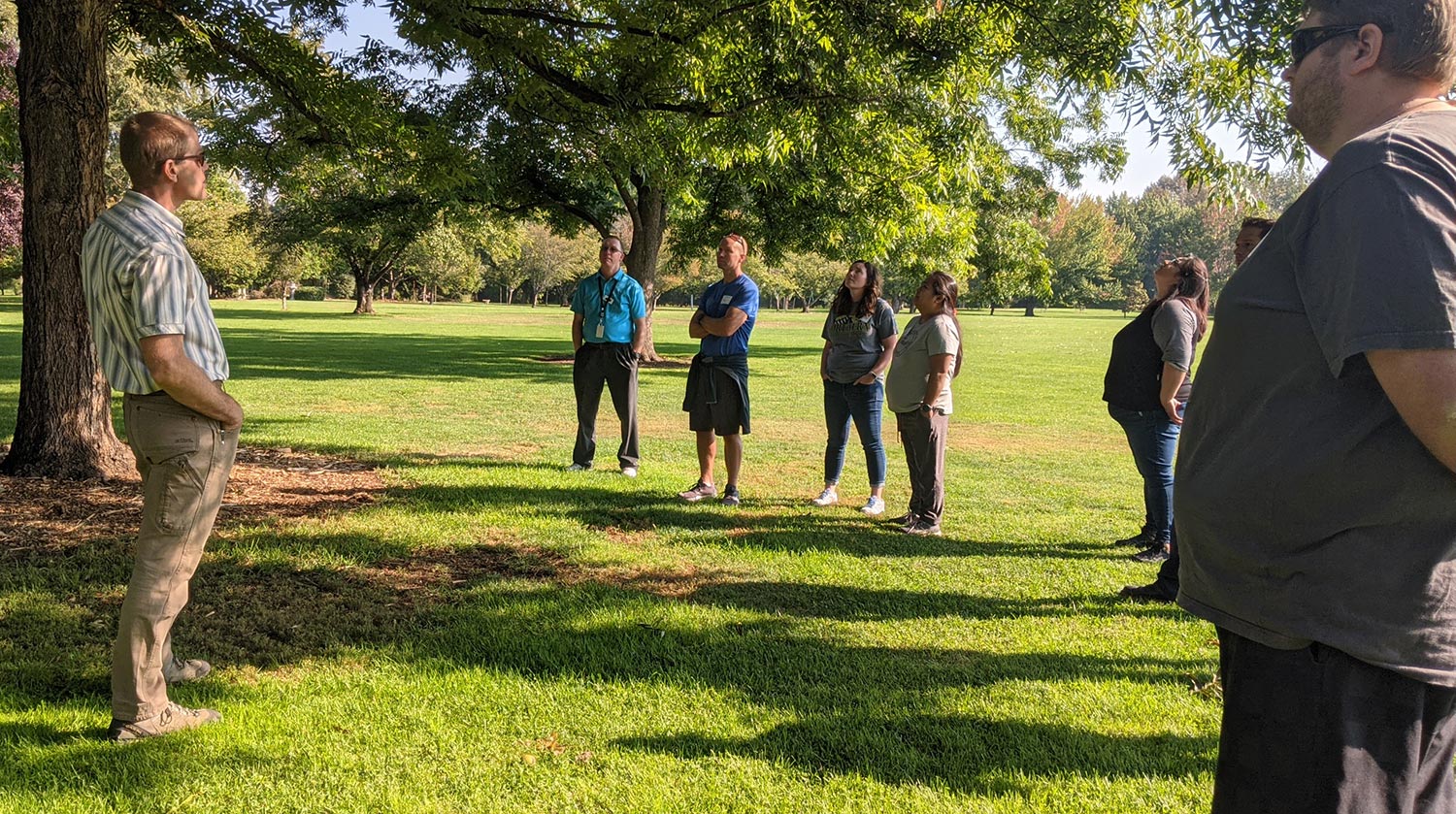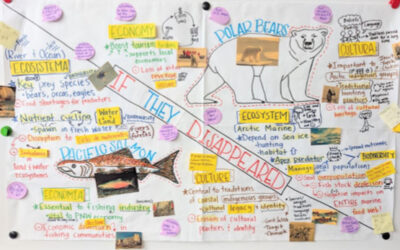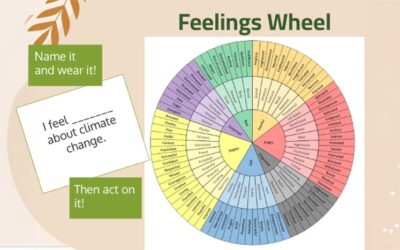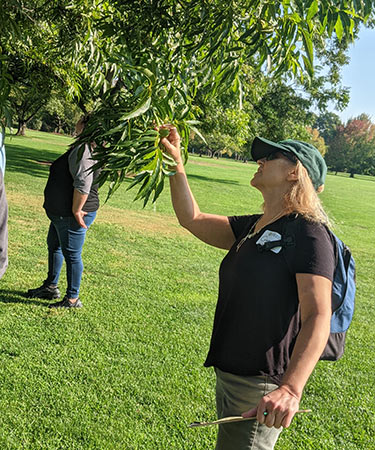
Teacher examining a leaf
Trees provide incredible benefits to our economy, human and more-than-human health, the environment, and the overall aesthetics of cities. On Saturday, October 8th, ten educators from the Yakima area joined Pacific Education Institute (PEI) and ESD 105 to learn how urban forests can also work to combat climate change and environmental health disparities. Additional funding support was provided by Key Bank.
“Urban forestry is a lot different than the forestry you think of. We look at more than just the board-foot value of a tree” explained Sean Tait, certified arborist and owner of Leaf on the Wind, LLC. Participants spent the morning with Tait exploring the grounds of the Yakima Area Arboretum to experience the benefits of trees first-hand. From cooling the air to the tens of thousands of chemicals trees use to communicate, educators stood in awe and wonder under the great weeping willow listening to Tait’s passion for tree health.
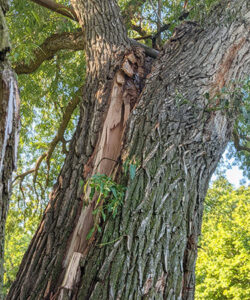
Damaged tree split down the middle
Tait also explored the relationship between trees and climate. “Trees can take 25, even 50 years to die from a disease or impact,” said Tait. He showed educators how important it is to do what we can to care for trees, especially in our urban areas. Not only do trees sequester carbon and produce oxygen as a biproduct, but they also improve health, property value, and more. Many of the past methods of care and propagation of trees are now being found to be harmful to our trees. New science guides cities and municipalities to improve urban areas through the planting and healthy management of trees.
Tait urged participants to see trees as incredible, sentient, and invaluable beings, reminding educators that humans do not always know best. “We need to have more humility and less hubris. Trees have anywhere from 17-23 senses compared to our five. We are poorly aware of where we are.”
